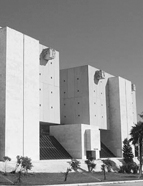

................................
“ It was established as a principle that historical documentation should be sent to the National Archive, literary documentation to the National Library, and financial documentation to the Public Treasury. This criterion fragmented document collections and created confusion in their distribution. As a result, much documentation that entered the A.N.T.T. was later sent to the Public Treasury or to the district civil governments. Similarly, much documentation did not come directly to the Archive from religious institutions but rather from National Assets, the National Library, Treasury Offices, and Civil Governments. Few registries are complete in the A.N.T.T .” ( Roteiro… , vol. 1, 1984, p. 241).
The effort to separate documentation required for administrative purposes from materials of historical and cultural interest disrupted the structural unity of the archives and undermined the organisational logic of the documents produced by each originating entity. This issue was further compounded by the fact that, in many cases, the complete records of dissolved institutions were not fully incorporated into the Torre do Tombo Archive (R. Azevedo, “A Colecção Especial…” ["The Special Collection..."] 1947). During the 19th century, interest in archives grew significantly, reflecting shifts in the understanding of h istory itself, influenced by p ositivism. Within this framework, Alexandre Herculano’s efforts, carried out under the auspices of the Lisbon Academy of Sciences, are particularly noteworthy. These efforts included visits to ecclesiastical archives across the Kingdom to locate documents that would eventually form the Portugaliae Monumenta Historica (A. Herculano, “Do estado dos archivos…” ["On the state of the archives..."]1873; Idem, “Apontamentos…” ["Notes..."]1914; G. Pereira, “Jornadas…”, 1909-1910; A. Baião, “Alexandre Herculano…”, 1909). This initiative resulted in the issuance of the Decree of September 11, 1857, which ordered the transfer of documents dating prior to 1280 from the registries of dioceses, chapters, convents, and collegiate churches to the National Archive of the Torre do Tombo. These documents were to be reviewed, and those considered significant would be transcribed for inclusion in the Monumentos Históricos de Portugal [Historical Monuments of Portugal] collection. The decree’s provisions were later strengthened by the Law of October 2, 1862, which extended the chronological scope of incorporations into the archive to include documents up to 1600, and by the Decree of December 29, 1887, which expanded the requirement to include records created before 1834 .
This work is financed by national funds through FCT - Foundation for Science and Technology, I.P, in the scope of the projects UIDB/04311/2020 and UIDP/04311/2020.
